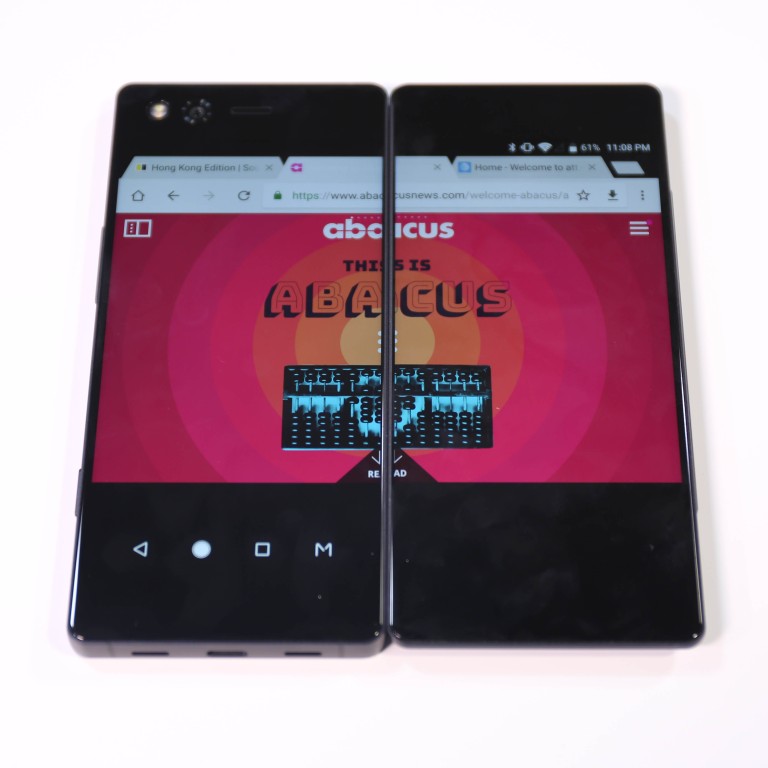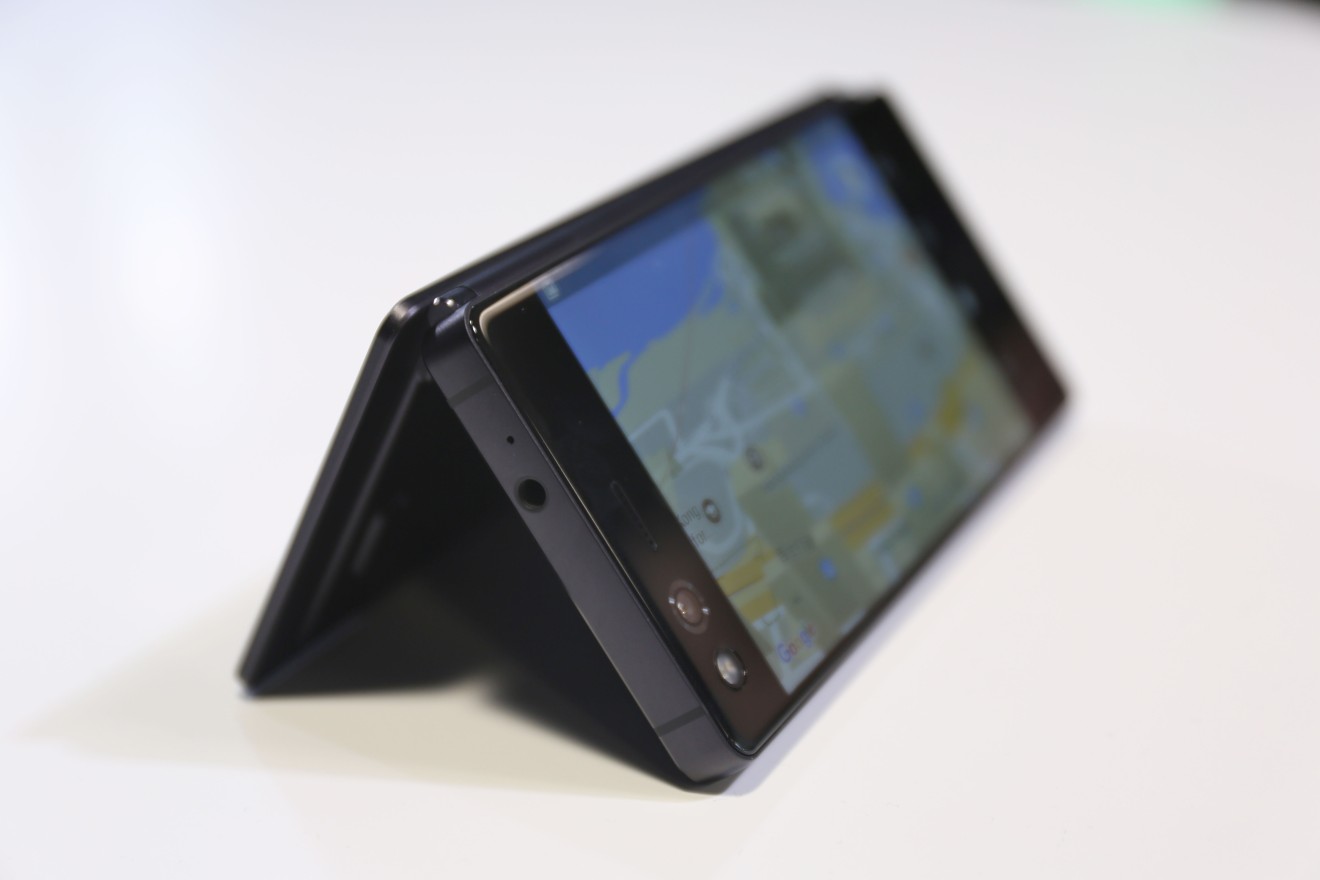
Dual-screen smartphone: ZTE Axon M review
Of course, even that isn't technically the first foldable phone. ZTE actually released a foldable phone back in 2017 -- but rather than one screen that folds in half, this one has two screens with a gap (and a hinge) in the middle. Our review found it was a bit of a hassle, but despite the flaws, the idea of a phone that can fold out to provide a bigger screen was genuinely useful.
Once upon a time mobile phones came in all shapes and sizes, with clamshells being a particularly popular form factor. Then along came the iPhone in 2007, and everything changed. In the last decade we’ve seen a smartphone boom with hundreds (if not thousands) of handsets, all following the basic form of that revolutionary Apple device: A flat rectangular slab with a touchscreen.
It’s funny how things come full circle, because ZTE is trying to jumpstart the next evolution of mobile phones by bringing back the clamshell design.
The ZTE Axon M, which hit the US late last year before reaching China and Japan last month, is not an attractive device on specs alone. It’s bulky, running on a nearly two-year-old Qualcomm CPU, with an average display surrounded by huge bezels.
But then you flip the device over to see a second display, which can be folded out to make one much bigger screen (albeit with a big black line in the middle). It makes the Axon M a fascinating device, and one that represents a forward thinking approach that consumers in the West may not associate with Chinese companies.

TWO SCREENS ARE MORE USEFUL THAN ONE
The selling point of this phone is simple: Two screens means you can do double of everything. You can combine the two 5.2-inch LCD panels into one large-ish screen or use them separately to run two apps side-by-side. (There’s also a third mode that mirrors the same content across both screens, but I didn’t see much use for that.)
There’s a noticeable half-second lag when switching display modes or orientation, but for the most part everything works. Just about any two apps can run side-by-side except games. And when using both screens as one, major apps like Facebook, Chrome, and YouTube will go into a larger, tablet style layout. Effectively doubling the size of the display improves reading and typing experience quite a bit, but the very noticeable gap that separates the two screens was a big distraction during videos. Non-optimised apps, like Instagram and most games, sometimes look a bit weird stretched out larger than usual. ZTE says it worked with Google and other major apps to optimise them for the Axon M’s hardware, but support varies depending on the app.
For me, the ability to run two full-sized apps at once ultimately came in most handy. One afternoon I worked on expenses with the calculator app on one screen and an Excel spreadsheet on the other; another time I had Google Maps navigate me to a restaurant on one side while I was informing my friends I’d be late via WhatsApp on the other. I even streamed Netflix while playing a board game one night. (And in case you’re wondering about taking multitasking a step further, ZTE disabled Android’s native split-screen functionality, so you can’t use the two screens to run four apps at once.)
Despite running on a 2016 chipset (Snapdragon 821), the phone handled everything pretty well. As I said before, there’s a bit of lag here and there, but nothing ever froze or crashed on me.
TOO MANY COMPROMISES
The Axon M, when it has both screens out, is a wonderful productivity machine. But when it’s folded up like a “normal” smartphone? That’s when problems arise.
The first is that, at 12.2 mm when folded, the Axon M is really thick. To put it into context, that’s thicker than the iPhone -- not the current one, but the original from 2007!
Another problem is that the second screen becomes the back of the device when folded. As far as I know there’s only one case available for this phone that doesn’t get in the way of the folding action (and I’ve only ever seen it on Taobao), so most likely you’ll be using this phone naked, with the second screen sitting on tables and rubbing against various objects in your pocket or bag. Good luck keeping it free of scratches.

TWO SCREENS… BUT JUST ONE CAMERA
In a curious move, ZTE opted to give the Axon M only one camera. It sits above the main screen, making it a selfie camera by default. If you want to take normal photos, you have to tap an on-screen button and then turn the phone around to use the second screen as a viewfinder. When you're done with the camera app, the rear screen just switches off -- and it always takes me a moment to remember to flip the phone over to keep using it.
If the camera produced amazing photos, then I can justify putting up with the hassle, but sadly that’s not the case here. Like the CPU, the Axon M’s camera is firmly stuck in 2016. Shots in the day look fine, but at night or in dimly lit situations, the Axon M’s photos will look noisier and duller than photos produced by any recent big name phones.
Battery life is also below par if you use both screens often. One afternoon I paired the Axon M to a wireless keyboard and typed a story on it, taking advantage of the dual screens to provide a bigger workspace -- but the battery went from 100% to 50% in just two hours. Asking a 3,180 mAh cell to power two displays is perhaps a bit much.
The Axon M is a device with some glaring flaws, but ZTE deserves credit for trying something new. As the smartphone increasingly replaces our computers, a folding mobile device that can double in screen size on the fly has genuine potential. Samsung is reportedly working on such a device right now. But that device doesn’t exist yet. If you want a glimpse of the future, the Axon M is here now.
For more insights into China tech, sign up for our tech newsletters, subscribe to our Inside China Tech podcast, and download the comprehensive 2019 China Internet Report. Also roam China Tech City, an award-winning interactive digital map at our sister site Abacus.

